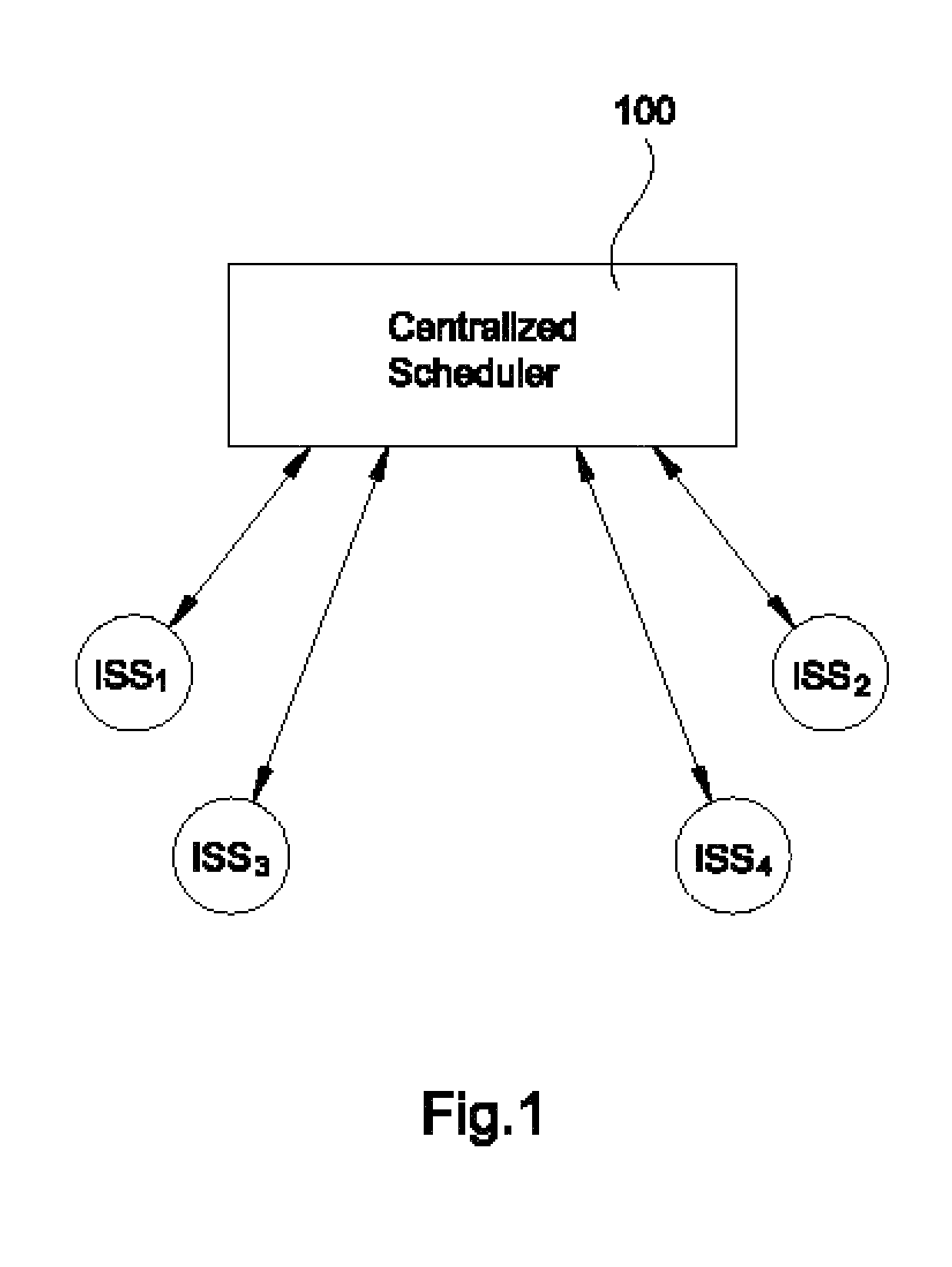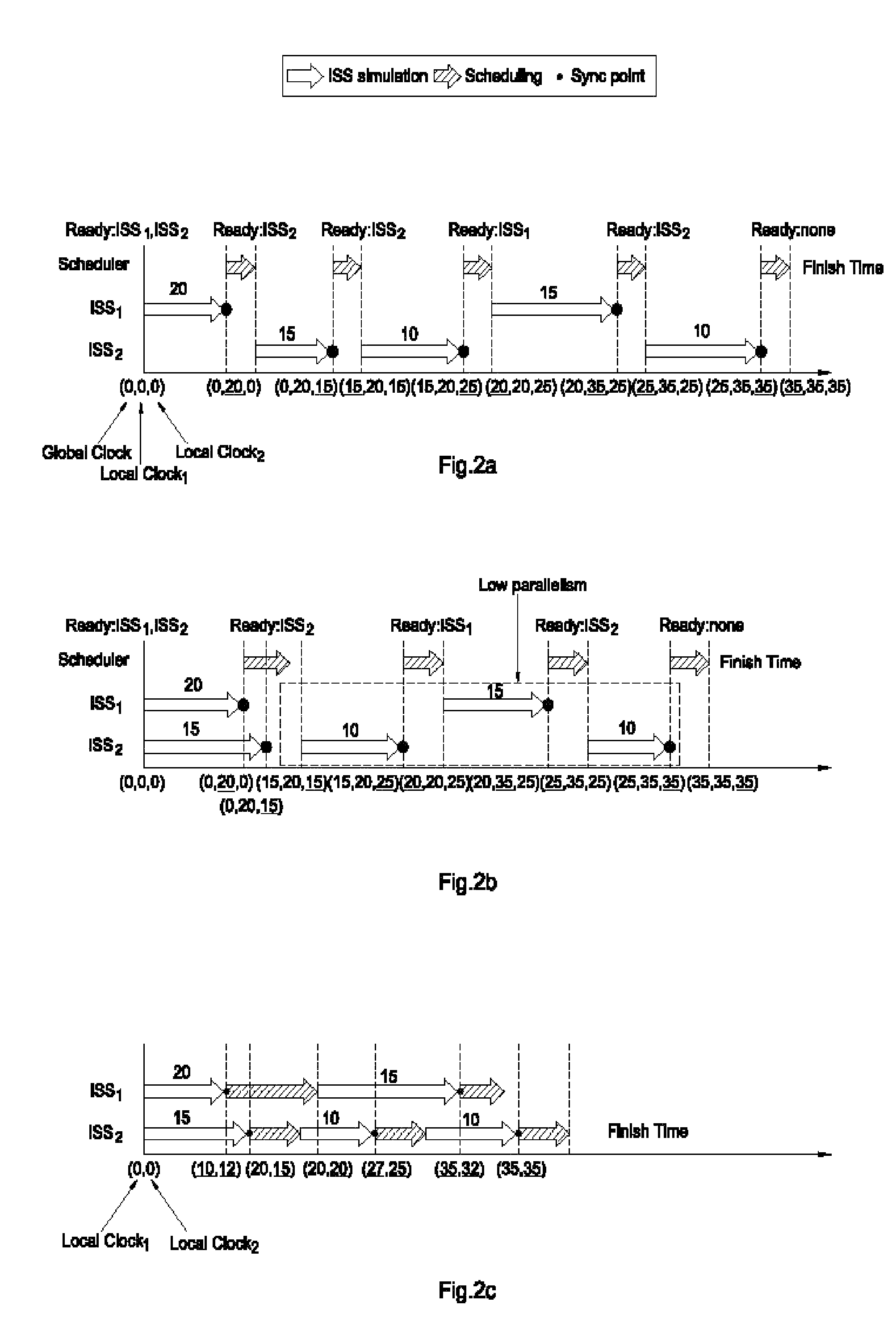High-parallelism synchronization approach for multi-core instruction-set simulation
a synchronization and instruction-set technology, applied in the field of instructionset simulation, can solve the problems of high overhead, lock-step approach incurs overhead, and simulations by different cores are not executed efficiently, so as to efficiently reduce the overhead of synchronization and maintain the accuracy. , the effect of keeping the speed in a good level
- Summary
- Abstract
- Description
- Claims
- Application Information
AI Technical Summary
Benefits of technology
Problems solved by technology
Method used
Image
Examples
Embodiment Construction
[0034]In the description below, for the purposes of explanation, numerous specific details are set forth in order to provide a thorough understanding of the present invention. It will be apparent, however, to one skilled in the art that the present invention may be practiced without some of these specific details. Furthermore, the terms described in the preferred embodiment of the present invention shall be interpreted in most extensive and reasonable way.
[0035]Furthermore, in order to overcome said drawbacks of prior arts about the synchronization of multi-core instruction-set simulation, the present invention is able to identify the correlation among different processors and synchronize the instruction-set simulator of each core by means of the correlation among different cores for the purpose of achieving a correct simulation result.
[0036]In a shared memory model, executive programs for different cores indirectly interact with each other by means of reading / writing accesses of th...
PUM
 Login to View More
Login to View More Abstract
Description
Claims
Application Information
 Login to View More
Login to View More - R&D
- Intellectual Property
- Life Sciences
- Materials
- Tech Scout
- Unparalleled Data Quality
- Higher Quality Content
- 60% Fewer Hallucinations
Browse by: Latest US Patents, China's latest patents, Technical Efficacy Thesaurus, Application Domain, Technology Topic, Popular Technical Reports.
© 2025 PatSnap. All rights reserved.Legal|Privacy policy|Modern Slavery Act Transparency Statement|Sitemap|About US| Contact US: help@patsnap.com



